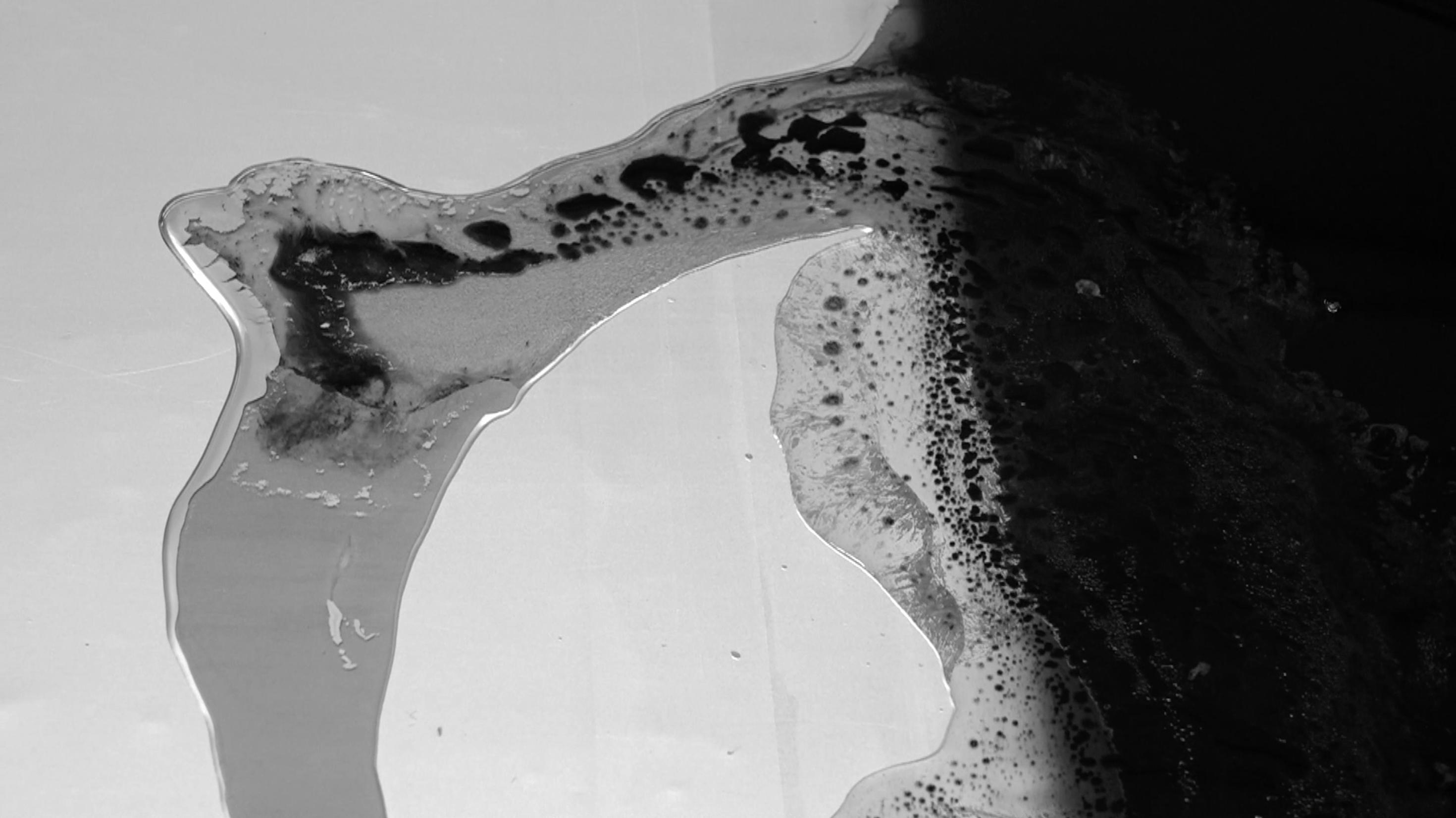Séquences sonores
Joint exhibition with Virgile Loiseau at RHoK academie’s pavilion, Brussels
May 27 to June 10, 2023
A sensory, visual and sound walk through the space of the RHOK pavilion: Marie Anne invited Virgile to respond to her work of monotypes with an auditory installation.
Joint exhibition with Virgile Loiseau at RHoK academie’s pavilion, Brussels
May 27 to June 10, 2023
A sensory, visual and sound walk through the space of the RHOK pavilion: Marie Anne invited Virgile to respond to her work of monotypes with an auditory installation.
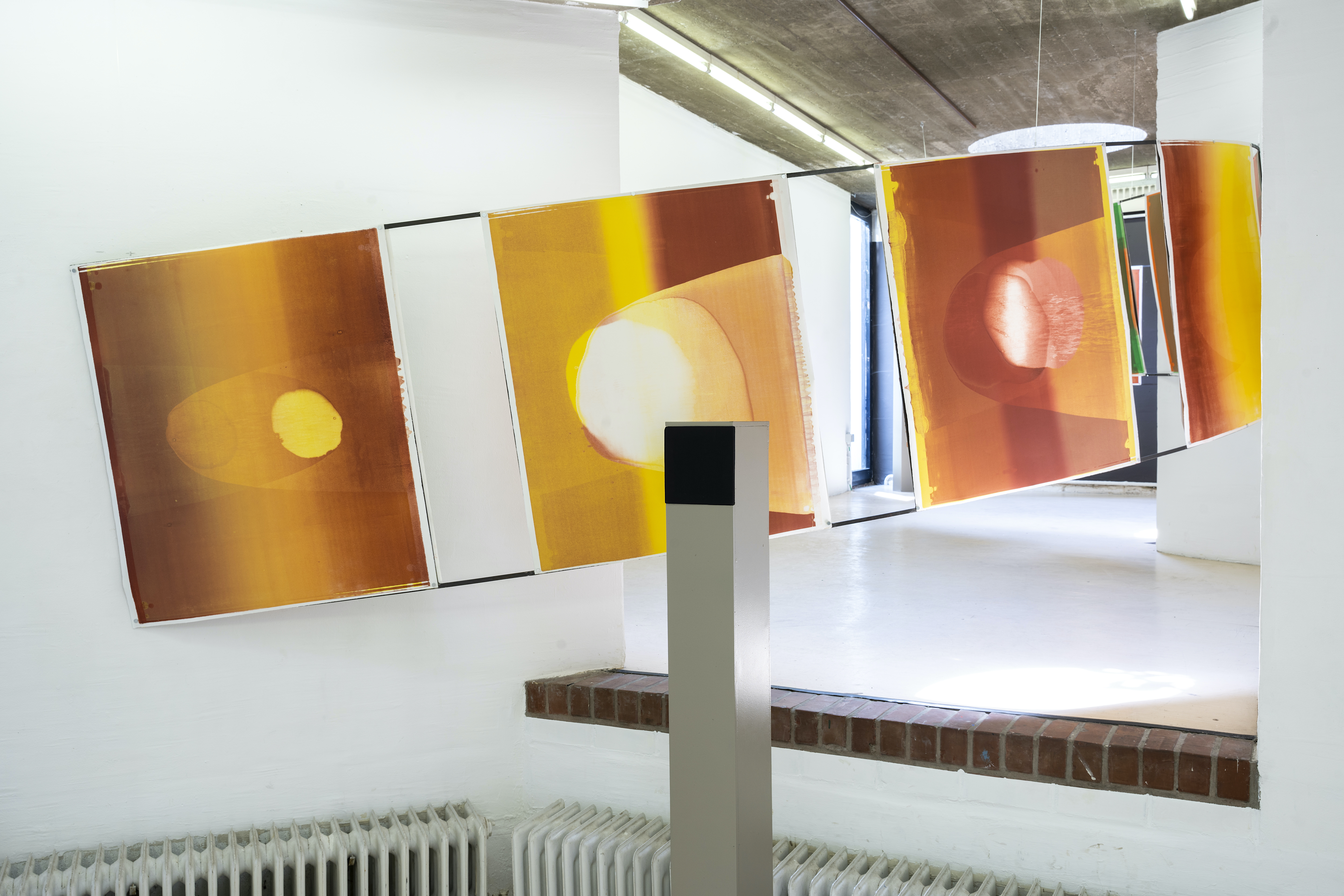


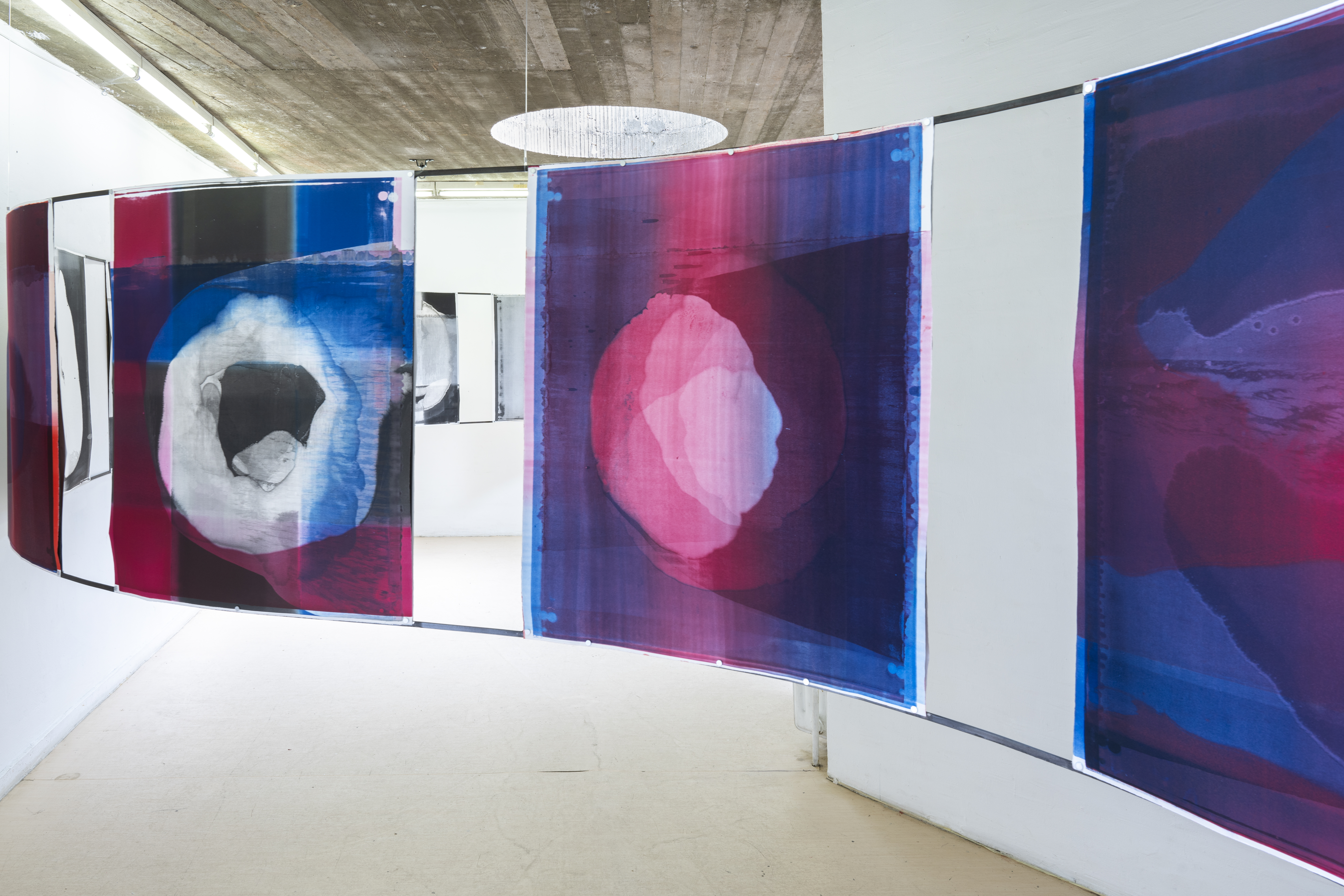

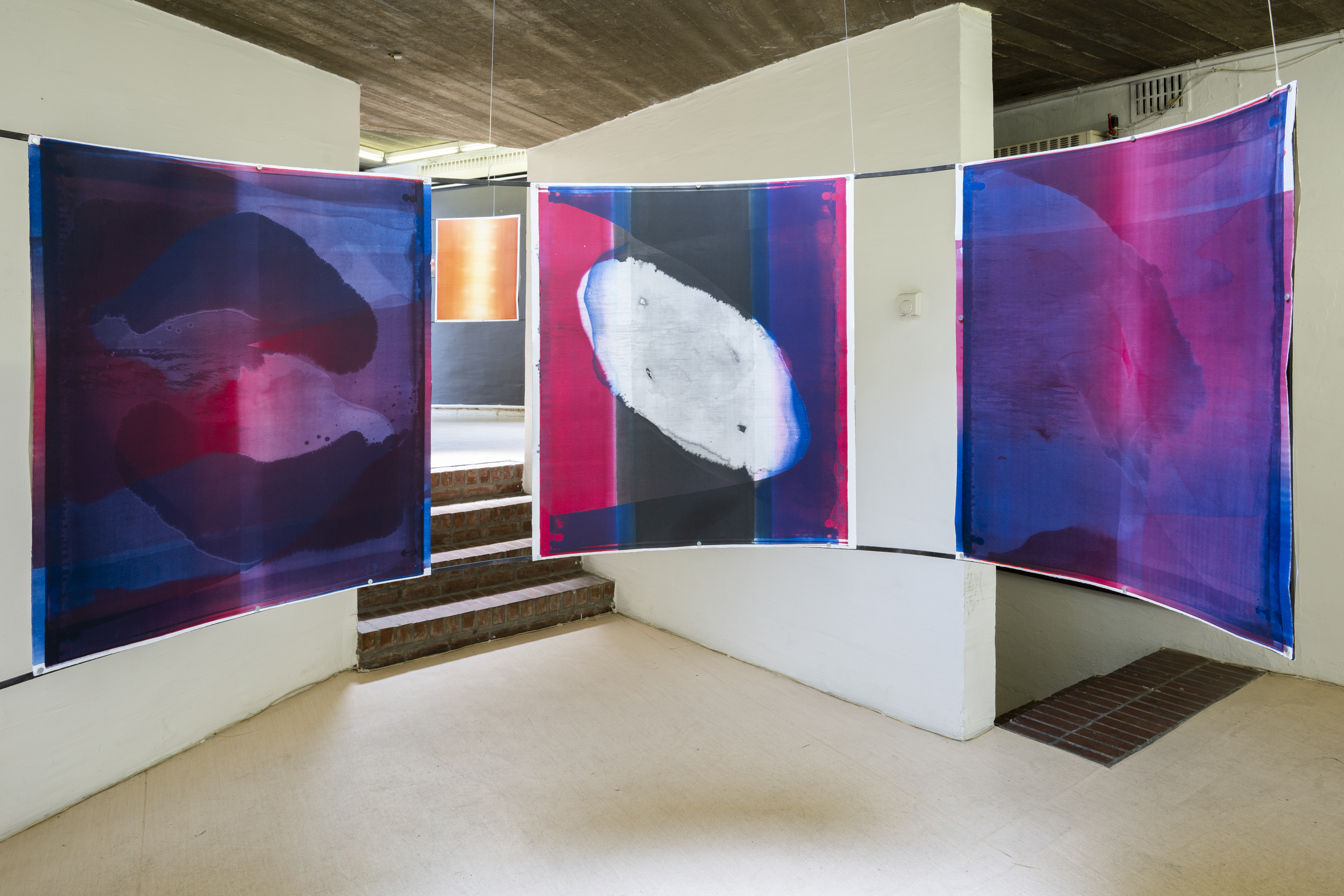


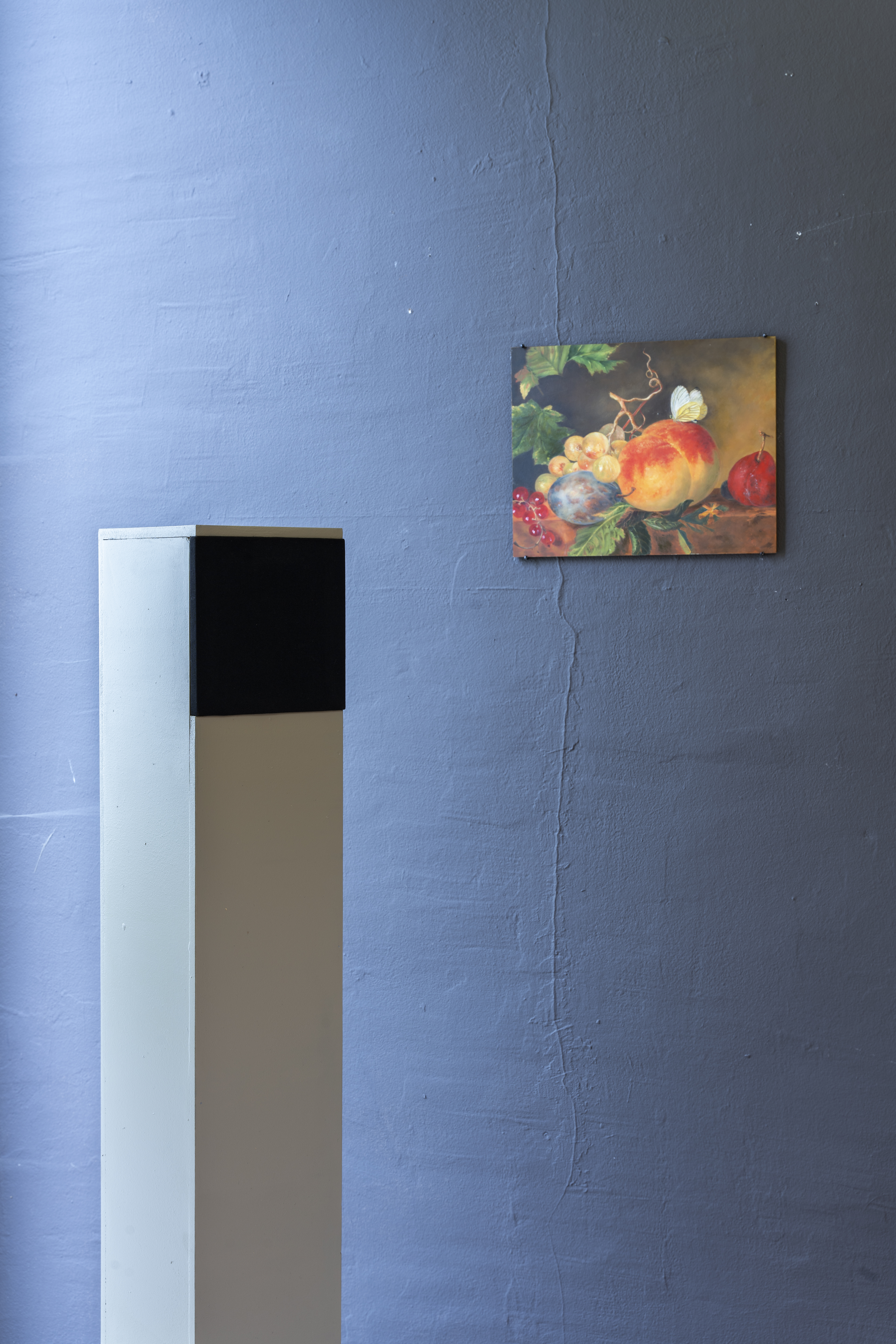

Evolving drawing
Marie Anne presents four series of monotypes exhibited as a narrative flow of images that reflect the transitory rhythm of life.
The print drawing is created with a fluid mix of ink and solvent on a zinc plate. The passage under the press freezes the moving inks on the paper. Marie Anne explores the mutative possibilities of the original drawing, reworking it on the plate between each print.
Organic versus machine
There is a contrast between the evolving and impermanent character of the drawings, and the systematic and regular character of the rail on which the prints are arranged. The drawings’ shapes are comparable to stars or molecules transforming from one landscape to another, while the rail reminds us of the crenels of the press or the mechanics of image production, whether we think of a photographic film or a "feed" on social networks.
Influence of ancient painting
In parallel to her monotype work, which she has been practicing for 10 years at the Rhok Academy, Marie Anne teaches ancient oil painting techniques in her studio. She taught herself to copy Flemish and Dutch masters’ painting at the Royal Museums of Fine Arts in Brussels, mainly still lives of the 16th and 17th centuries. These techniques still influence her monotypes on a technical level: transparent superimpositions, depth, textures, shadows and light...
“Nature morte, nature vivante”
Fruits, flowers, skulls, candles, insects, etc. Ancient still lives represent perishable objects that symbolize the passage of time, the fragility of life or even vanity. Marie Anne's monotypes echo this introspective vision as they capture a mutating state in print. They are the result of a kinetic process.
Colors
The four series take on a different personality thanks to their color combinations. Inspired by Josef Albers’ practice, Marie Anne observes the character that one color takes in interaction with another. She manually mixes the colors of each series and combines them in an experimental and intuitive way. The light emanating from the combinations is what interests her above all.
Virgile Loiseau
Virgile is a sound artist who creates auditive documentaries. He considers sounds as a field of study and a means of expression, but above all a way of cultivating and questioning the link he has with others and his environment via the almost personified presence of the microphone.
From meetings to residencies, he collaborates with artists with photography, video, theatre or painting practices. He questions the relationship between sound and visual perceptions, and collects poetic testimonies of strangers on the noises inhabiting their daily life.
Sound installation
Virgile installed a sound system of 4 spatialized speakers in the pavilion. The soundtracks are composed of electroacoustic elements, field recordings and voice fragments from interviews, altered by different mixing processes. Each speaker broadcasts a different tape.
The audio installation dialogues with Marie Anne's visual work, personalizing the series of prints with particular connotations. Sound is everywhere, in rhythm or in ruptures, disorienting the acoustic perceptions we got used to trust.
Video
‘Séquences organiques’, film by Virgile Loiseau and Marie Anne Truffino, 2022.
The film completes the exhibition, giving an overview of Marie Anne's monotype practice through these series of works. The gestural and mechanical rhythms and repetitions seek a balance between control and "accident".
‘Séquences organiques’, film by Virgile Loiseau and Marie Anne Truffino, 2022.
The film completes the exhibition, giving an overview of Marie Anne's monotype practice through these series of works. The gestural and mechanical rhythms and repetitions seek a balance between control and "accident".






